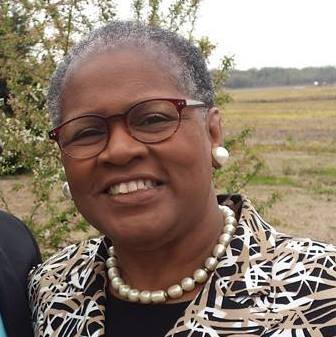
Tennessee has always been a late bloomer when it comes to civil rights and that also extended to the education of its children.
In the 20-year period between 1951 to 1971, 43 public school districts in Tennessee were sued to desegregate its schools. Tipton County was one of them.
Although, the Supreme Court unanimously decided on May 17, 1954, “separate educational facilities are inherently unequal” in Brown v. Board of Education of Topeka, they did not give immediate direction on how to implement its ruling.
Instead, the court directed the attorney generals of each state that practiced segregation to submit plans for how they planned to proceed with desegregation with “all deliberate speed.”
“All deliberate speed” did not come to Tipton County until the summer of 1965, and only after the Civil Rights Act of 1964 had been enacted.
The county approved a “freedom of choice” plan of school desegregation, which at that time, was approved by the Tennessee Commissioner of Education as adequate to “accomplish the purposes of the Civil Rights Act of 1964.”
This plan opened the door for voluntarily desegregation for the 1965-66 school term.
At the start of the white school term, approximately 330 black children registered at previously all-white schools throughout the county system. Byars Hall registered 116 black high school students, Munford and Holmes schools each registered 40 students, Brighton schools had 70 and Mason accepted 64 students.
It was the first time in the history of Tipton County that black and white students attended the same schools.
The Sneeds act on integration
Understanding the importance of education and the equal opportunities that weren’t afford to themselves, the family of James L. “Joe” Sneed of Wilkinsville was one of the first families to integrate Munford schools.
“We didn’t get the opportunity to get the schooling,” said Bessie Sneed, explaining the reason why she sent her children to Munford. “And I was determined that my children would get what we didn’t have.”
Her husband, Joe worked in construction at a site in Jackson, Miss. at the time and wasn’t at home during the start of the school year but fully supported his wife’s decision.
“She called me and said what are we going to do?” remembered Sneed. “I said what ever you believe in, go ahead and do it.”
“The law had said it was time to integrate but it was not being enforced,” added Bessie. “If you don’t take advantage of it then nothing happens.”

The Sneeds sent their oldest daughter, Dr. Charlotte Fisher, who was 9 years old at the time, to Munford Grammar School.
“I was always pushing Charlotte in particular, ’cause she’s the oldest,” said Bessie. “I just sent her because I knew it was time and no one had talked about what we were going to do. This was the time that we were out cause it was cotton-picking time but the whites were getting ready to go back to school. I just decided that I was going to make a difference, so I called some more parents and we got together and talked.”
Calling on Dr. Maxine Smith and the Memphis chapter of the NAACP for support, Smith quickly stepped in and met with the parents who were the first to step forward to break the color barrier. The group worked to educated parents on what to expect and to encourage them to be involved in all aspects of their children’s new schools.
“Maxine Smith came out and met with us to help us get ourselves together so we knew what to do with the kids,” said Bessie. “We were organized. We had a small group in this area and four or five cars. When they were opening the schools for the whites, we decided that we were going to drive our children to the school to register them.”
After enrolling their children at the previous all-white school, Bessie soon learned that not everyone was happy with the integration decision. She said that many of the families received threatening phone calls and some even had crosses burned in their yards.
“Yeah, that’s what they did,” said Bessie, shaking her head. “I never got a call but some of the others did and there was many that even burned crosses in Dixonville in the yards.”
In addition to the subtle and not-so-subtle intimidation attacks, many fights broke out at Byars Hall between black and white students, the NAACP threatened boycotts against Covington businesses, suspicious fires occurred at black schools and some parents even went so far as to start their own private school for their children.
Remembering back on her own education, or rather lack thereof, Bessie related how she used to have to walk miles to a school that lacked the essential resources for a quality education while the white students were transported on buses.
“We got the pass down books from the whites, books with no backs on them and we were behind because we got the old books. They got the new books, that’s just the way it was,” she said. “They made us walk to school. We had to walk a couple of miles, across 51 highway and across the railroad tracks to Tipton School and there was a school right up the road from where we lived. I used to look at their school every day as we passed. They had buses for the white kids and there’d be about 50 of us walking alongside the road and they’d come by on their bus and would be throwing stuff at us through the window and spitting.”
Two teachers filed a federal lawsuit
An unforeseen consequence of the black students enrolling into previous white-only schools, caused a few of the black schools to see a decrease in their enrollment, which led the board to close some schools and fire teachers. Brighton area school, Bloomington, was one such institution that saw an approximately 20 percent decline in student enrollment when 70 of its students transferred to Munford schools. Teachers Bertha S. Fayne and her daughter, Annie B. Weaver, were fired on Sept. 10, 1965 from their jobs at Bloomington.
Weeks later, on Oct. 1, Fayne and Weaver filed suit in Memphis Federal Court, naming the superintendent of Tipton County Schools, Shannon Faulkner, and the school board as defendants, charging the Tipton County Board of Education with racial discrimination and asked for an injunction barring hiring, assigning, transferring, promoting or dismissing teachers “on a racial basis.”
Fayne and Ernestine P. Norfolk filed a second lawsuit against the school board a couple of weeks later in Tipton County chancery court.
The teachers contended that Norfolk had taught more than 29 years and Fayne more than 33 years and that both had teaching tenure. The plea also said that both women had bachelor’s degrees from accredited colleges and valid Tennessee teachers’ certifications. The suit went on to say that the notices of dismissal did not explain in full the circumstances or conditions making the dismissals necessary and again asked for immediate reinstatement and back pay.
The Department of Health, Education and Welfare soon became involved and sent several teams to Tipton County to investigate the charges of racial discrimination, the unfair discipline of black children and transportation issues.
In January 1966, additional teams of investigators descending on Tipton County to check the county school system for compliance with the Civil Rights Act of 1964.
At that time, Tipton County was the only county in Tennessee being investigated and was one of only seven school districts in the South under scrutiny.
In 1967, the lack of cooperation to fully integrate its schools, lead to many problems for the school system.
Integration, federal oversight forced on Tipton County
An article written in The Covington Leader in April 1967 stated that the board’s position remained unchanged pending a decision in the federal court case against them. Additionally, the commissioner of education withdrew his support in view of the failure of the county school district to submit him assurance that it would bring its desegregation plan into conformity with the revised guidelines which became effective May 6, 1966.
Tipton County was one of two systems in the state which failed to sign the 1966 guidelines. Federal funds were threatened and, in 1969, the United States Department of Justice joined Fayne and Weaver in their lawsuit filing U. S. and Fayne and Weaver v. Board of Education of Tipton County.
That case placed Tipton County Schools under federal court order and scrutiny, for the next 38 years.
In 1970, the Department of Justice had finally had enough and ordered Tipton County to mandatorily integrate its school system for the 1970-71 school year.
In the fall of 1970, all of Tipton County’s students were attending one of six fully- integrated schools. There were two high schools, Brighton High and Covington High, which was formerly known as Byars Hall, and four K-8 schools – Brighton, Munford, Drummonds and Crestview, which was one of the largest in the state with about 1,800 students.
Even though Tipton County had been fully integrated since 1970, the school system was not released from federal supervision until 2007.
U.S. District Judge Jon P. McCalla ruled in favor of Tipton County Schools on a motion filed in October 2007 by the district asking for release from the 38-year Justice Department’s desegregation order seeking a designation of “unitary status.”
For the almost four decades Tipton County was under federal oversight, the Justice Department monitored the racial makeup of students, staff, faculty, transportation patterns and disciplinary referrals.
While under the federal order, the district wasn’t able to build a school or redraw a zone line without the Justice Department’s approval.
In McCalla’s ruling, Justice Department officials deemed the district had made significant progress and was worthy of unitary status. “The district has satisfactorily and in good faith complied with the remedial provisions of the original order and subsequent orders.”
Fayne praises his aunts’ efforts
Rickey Fayne, who was at the time of the federal release was Tipton County School’s director of operations, is the nephew of the two plaintiffs who originally filed the lawsuit in 1965. His testimony was instrumental in gaining the district’s release. In his affidavit, he stated, “students and employees of all races are treated in a nondiscriminatory manner.”
“I am very proud of what my aunts did,” stated Fayne. “They saw a wrong and fought to correct it.”
Tipton County Schools Director Buddy Bibb, although happy that the district is no longer under federal oversight, realizes that the district has to be diligent and fair in every aspect of the operations of Tipton County schools.
“What I hope that people realize is that it wouldn’t take but one complaint to put us back under,” he said. “So we can’t just go out there and do whatever we want to do. We still have to follow guidelines, and when we need to build a school and redraw zone lines, it still needs to reflect the community. Even though we don’t have to go back for their approval anymore, if you didn’t go about it the right way, you could find yourself back under a court order.”
Although their lawsuit was instrumental in moving Tipton County forward on the path of integration, the plaintiffs of U. S. and Fayne and Weaver v. Board of Education of Tipton County received many death threats and felt unwelcome in the county of their birth and soon moved away for safety reasons.






Leave a Reply